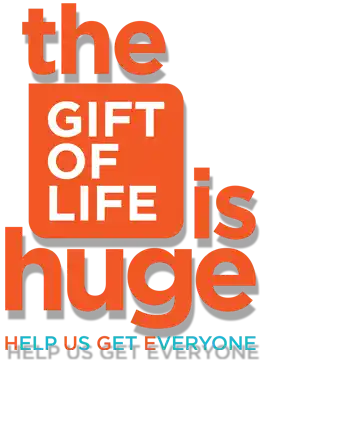Saving Lives, One Donor at a Time
Every year, on October 7th, Team Margot Stem Cell and Bone Marrow Awareness Day shines a spotlight on the critical need for more stem cell and bone marrow donors. This day was first launched in 2015 by the family of Margot Martini, a toddler diagnosed with blood cancer on October 7, 2013. Her battle with the disease illuminated the serious shortage of available donors worldwide, particularly for those of mixed ethnicity. Sadly, Margot passed away at the age of two, but her legacy lives on through this awareness initiative, aimed at saving lives through donor registration.
The Urgent Need for Donors
Stem cell and bone marrow transplants can be life-saving treatments for patients with blood cancers and other life-threatening conditions. The process involves finding a donor who is a tissue match, but unfortunately, the odds of finding a match are slim—especially for individuals from minority or mixed-ethnicity backgrounds. Many patients, like Margot, face difficulties in finding suitable matches because certain ethnic groups are underrepresented in the global donor registries.
For this reason, Team Margot focuses its efforts on raising awareness and encouraging individuals, particularly those from diverse ethnic backgrounds, to register as potential stem cell donors. The initiative highlights that becoming a donor is a simple process, often involving a cheek swab or saliva sample, and that the act of registering could one day save a life.
How Stem Cells and Bone Marrow Help in Treatments
Stem cells and bone marrow transplants play a pivotal role in treating individuals suffering from life-threatening blood diseases, such as leukemia, lymphoma, and other blood disorders. These transplants involve replacing damaged or diseased bone marrow with healthy stem cells, enabling the body to produce essential blood components.
 Stem cells are remarkable because they can develop into various types of cells in the body. Hematopoietic stem cells, which are found in bone marrow, are responsible for creating red blood cells, white blood cells, and platelets. When a patient’s bone marrow is compromised due to disease or harsh treatments like chemotherapy, it may no longer produce these vital cells. Stem cell transplants offer a solution by introducing healthy donor cells into the patient's system.
Stem cells are remarkable because they can develop into various types of cells in the body. Hematopoietic stem cells, which are found in bone marrow, are responsible for creating red blood cells, white blood cells, and platelets. When a patient’s bone marrow is compromised due to disease or harsh treatments like chemotherapy, it may no longer produce these vital cells. Stem cell transplants offer a solution by introducing healthy donor cells into the patient's system.
Several key ways stem cells and bone marrow transplants benefit patients:
- Restoring Bone Marrow Function: Treatments like chemotherapy or radiation can severely damage bone marrow, which disrupts the body’s ability to produce blood cells. Stem cell transplants replenish these cells, allowing the body to produce healthy blood components again, including oxygen-carrying red blood cells, infection-fighting white blood cells, and platelets for clotting.
- Immune System Reset: In some blood cancers and autoimmune diseases, the immune system becomes dysfunctional. A stem cell transplant can essentially "reset" the immune system by destroying the diseased cells and replacing them with healthy stem cells from a donor. This can help reduce the chance of disease relapse and allow the body to function normally.
- Targeting Cancer: For certain types of blood cancers, a bone marrow transplant is part of the treatment to eradicate cancerous cells. By destroying the cancerous bone marrow and replacing it with healthy donor cells, doctors can significantly lower the risk of the cancer returning.
- Treating Genetic Blood Disorders: Patients with genetic blood conditions, such as sickle cell anemia or thalassemia, can be cured through stem cell transplants. By replacing their defective bone marrow with healthy cells, they gain the ability to produce functioning blood cells, which eliminates the debilitating effects of their diseases.
While these transplants offer life-saving treatments, the challenge lies in finding compatible donors. This is especially difficult for patients from diverse ethnic backgrounds, as they often have a smaller pool of potential matches in global donor registries. This is why awareness campaigns like Team Margot Stem Cell and Bone Marrow Awareness Day are critical, as they encourage people to register as potential donors and contribute to saving lives.
Margot’s Legacy
Margot’s story quickly captured international attention, with celebrities, organizations, and media outlets helping to raise awareness about the importance of donor registration. The Team Margot Foundation has worked tirelessly since then, organizing donor registration events, school outreach programs, and partnerships with charities like Anthony Nolan and NHS Blood and Transplant.
What started as a mission to find a match for Margot has since grown into a global effort to tackle the donor shortage. The day itself has evolved, now encompassing not just stem cell and bone marrow donations but also blood, platelet, and organ donations, all of which were vital during Margot’s treatment.
How to Get Involved
Participating in Team Margot Stem Cell and Bone Marrow Awareness Day is not just about awareness—it's about taking action. Here’s how you can make a difference:
- Register as a Donor: The simplest and most impactful way to help is by joining a donor registry. This can be done online through organizations like Anthony Nolan in the UK, or Be The Match in the US. It only takes a few minutes, but your decision could save someone’s life.
- Spread the Word: Use social media to raise awareness about the day and the importance of stem cell donations. Sharing stories like Margot’s or using hashtags can help amplify the message and encourage others to register.
- Host or Join a Donor Drive: Communities and workplaces can organize donor drives to educate and recruit potential donors. These events are a great way to bring people together for a life-saving cause.
- Wear Pink: Pink has become the signature color of Team Margot. Wearing pink on October 7th not only honors Margot’s legacy but also sparks conversations about the importance of donor registration.
By participating in Team Margot Stem Cell and Bone Marrow Awareness Day, we can collectively help close the gap between those waiting for a donor and those ready to step up. Margot’s legacy reminds us all that one small act—like joining a registry—has the potential to change, or even save, a life.
Please Share our Content






 Stem cells are remarkable because they can develop into various types of cells in the body. Hematopoietic stem cells, which are found in bone marrow, are responsible for creating red blood cells, white blood cells, and platelets. When a patient’s bone marrow is compromised due to disease or harsh treatments like chemotherapy, it may no longer produce these vital cells. Stem cell transplants offer a solution by introducing healthy donor cells into the patient's system.
Stem cells are remarkable because they can develop into various types of cells in the body. Hematopoietic stem cells, which are found in bone marrow, are responsible for creating red blood cells, white blood cells, and platelets. When a patient’s bone marrow is compromised due to disease or harsh treatments like chemotherapy, it may no longer produce these vital cells. Stem cell transplants offer a solution by introducing healthy donor cells into the patient's system.








 "Sláinte!" is a traditional Irish expression used as a toast, equivalent to "Cheers!" in English.
"Sláinte!" is a traditional Irish expression used as a toast, equivalent to "Cheers!" in English.